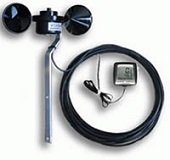How to choose an anemometer for your application!
How to choose an anemometer for your application! |
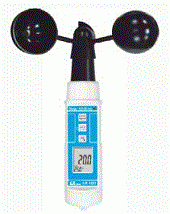 | Choosing an anemometer can be tricky. There are lots of different styles, and they all
have different functionality. In this month’s newsletter we are going to look at the 4 main types of
anemometer, their pros and cons and how you can choose the anemometer that is best suited to your
requirements. Cup anemometers: Cup anemometers are the most recognisable style of anemometer. They generally consist
of three cups that rotate around an axis. When the wind blows, the cups rotate and a reed switch or
a Hall effect sensor is generally used to measure this rotation. The rotation is then converted to a
wind speed reading. | |
Pros
-They don’t need to be pointed towards the source of the wind
-Highly reliable and rugged Cons -Can have a high starting velocity (not well suited to very low measurements) -Can overestimate wind speed in turbulent conditions -Moving parts will wear out over time Our most popular cup anemometer Vane anemometers work in a similar way to cup anemometers but the sensors are shaped like a windmill or turbine. Vane anemometers must be pointed towards the wind to read accurately. They are popular for HVAC applications. Pros -Can handle dirtier environments and more rugged than hot wire anemometers -Can handle higher velocities than hot wire anemometers Cons -Must be pointed towards source for accurate readings -Smaller vanes can have a high starting velocity -Moving parts will wear out over time Our most popular Vane Anemometer 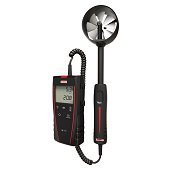 Thermo-anemometer with 100mm vane probe - LV110S Hot wire anemometers work by heating up a fine wire above ambient temperatures and then measuring how much current is required to keep it at a constant temperature, or measuring how much the temperature changes under constant current. The heat loss is then converted into an air velocity reading. Pros -Low starting threshold -Small sensor size -No moving parts -High accuracy and quick response Cons -Not suited to areas with rapidly fluctuating temperature -Large particles in the air can damage the sensor Our most popular hot wire anemometer 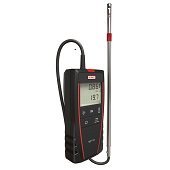 Thermo-anemometer with hotwire - VT110S Pitot Tube anemometers Pitot tube anemometers measure pressure and use this to calculate air velocity. A Pitot tube is used for measuring the total pressure of the incoming air and a static tube is used to measure the static pressure in the air flow. The meter then calculates the air velocity using the Bernoulli equation. Pros -Can handle very high air velocity and temperature -Pitot tubes can be quite small and are easy to insert into duct work. -No moving parts -Quick response Cons -Not suited to very low air velocity -Not well suited to fluctuating flow -Must be pointed at direction of air flow Our most popular pitot tube anemometer 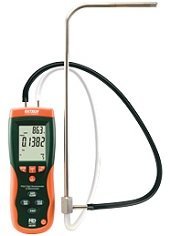 PitotTube Anemometer with Differential Manometer - Extech HD350 | ||
Contact our expert scientists now to get the right meter or data logger to suit your needs and discuss your project.
Phone: 1300 737 871
Email: [email protected]

